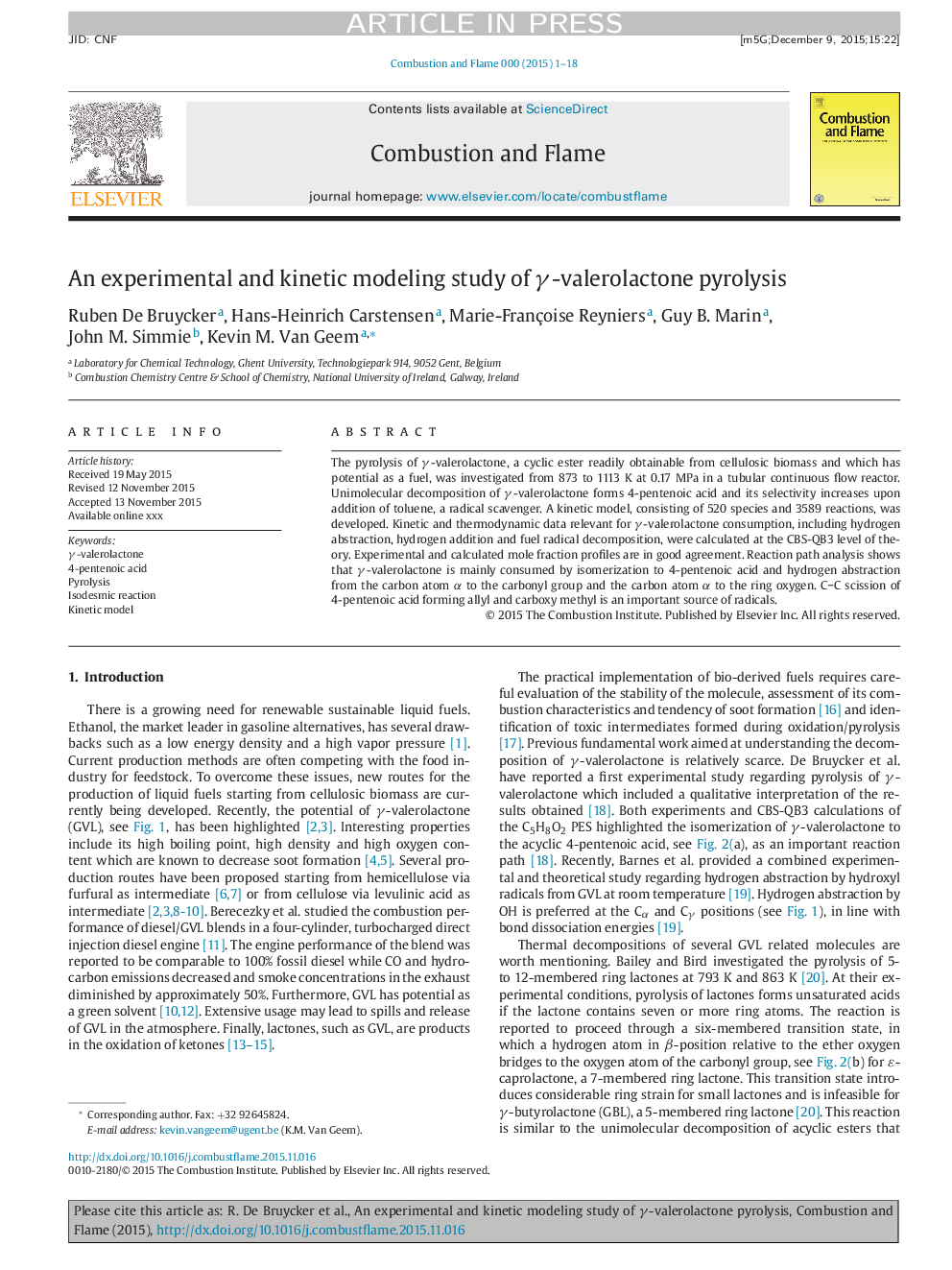| Article ID | Journal | Published Year | Pages | File Type |
|---|---|---|---|---|
| 6594292 | Combustion and Flame | 2016 | 18 Pages |
Abstract
The pyrolysis of γ-valerolactone, a cyclic ester readily obtainable from cellulosic biomass and which has potential as a fuel, was investigated from 873 to 1113 K at 0.17 MPa in a tubular continuous flow reactor. Unimolecular decomposition of γ-valerolactone forms 4-pentenoic acid and its selectivity increases upon addition of toluene, a radical scavenger. A kinetic model, consisting of 520 species and 3589 reactions, was developed. Kinetic and thermodynamic data relevant for γ-valerolactone consumption, including hydrogen abstraction, hydrogen addition and fuel radical decomposition, were calculated at the CBS-QB3 level of theory. Experimental and calculated mole fraction profiles are in good agreement. Reaction path analysis shows that γ-valerolactone is mainly consumed by isomerization to 4-pentenoic acid and hydrogen abstraction from the carbon atom α to the carbonyl group and the carbon atom α to the ring oxygen. CC scission of 4-pentenoic acid forming allyl and carboxy methyl is an important source of radicals.
Related Topics
Physical Sciences and Engineering
Chemical Engineering
Chemical Engineering (General)
Authors
Ruben De Bruycker, Hans-Heinrich Carstensen, Marie-Françoise Reyniers, Guy B. Marin, John M. Simmie, Kevin M. Van Geem,
